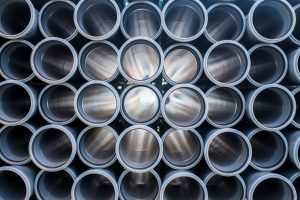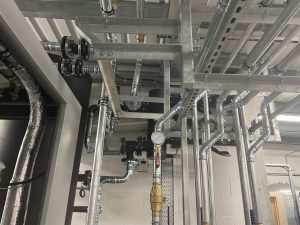Industrial piping systems are the backbone of many manufacturing plants, chemical facilities, and oil refineries. They transport fluids, gases, and even solids from one point to another, ensuring seamless operations. But before these systems are up and running, a meticulous process called industrial pipework fabrication takes place. This article aims to shed light on what this process entails, its importance, and the key methods employed.
What is it?
In simple terms, industrial pipework fabrication is the process of constructing pipes and pipe systems to meet the specific needs of an industrial setting. The process often involves several stages, including design, cutting, bending, and welding, all customised to suit the project’s unique requirements. High-quality materials like stainless steel, carbon steel, and sometimes even exotic alloys are used to guarantee durability and reliability.
Why is it Important?
Industrial pipework fabrication is a crucial step in setting up any large-scale manufacturing or processing plant. Without well-fabricated pipes, it’s challenging to maintain the necessary flow rates, pressures, and temperatures for industrial processes. Moreover, a poorly fabricated piping system can lead to inefficiencies, causing increased operational costs and even posing safety risks.
Economic Implications
From a monetary standpoint, fabricating pipes in an efficient and high-quality manner can significantly affect a project’s total costs. Accurate fabrication ensures that the pipes fit well, reducing the need for further adjustments or replacements down the line. This saves both time and money, leading to a more streamlined operational process.
Safety Concerns
Industrial settings can be hazardous, especially when dealing with volatile substances. Pipework fabrication must meet stringent safety standards to prevent incidents like leaks or explosions. Therefore, the importance of using high-quality materials and following best practices can’t be overstated.
Key Methods
Cutting
The first step in pipework fabrication is cutting the material to the required lengths. Various methods like sawing, plasma cutting, and laser cutting are employed, depending on the material and the precision needed.
Bending
After cutting, the pipes may need to be bent to meet specific design criteria. Bending is usually achieved through methods like induction bending or rotary draw bending.
Welding
Welding is perhaps the most critical stage in the fabrication process. It involves joining the cut and bent pieces to form the final structure. Techniques like TIG (Tungsten Inert Gas) and MIG (Metal Inert Gas) welding are commonly used, depending on the materials involved.
Testing
Finally, rigorous tests are carried out to ensure that the fabricated pipes meet all quality and safety standards. These may include pressure tests, non-destructive tests, and visual inspections.
Conclusion
Understanding the ins and outs of industrial pipework fabrication is essential for anyone involved in the planning, construction, or maintenance of a manufacturing facility or similar environments. It’s a process that directly impacts both the operational efficiency and safety of a plant. As industries continue to evolve, so do the methods and technologies used in pipework fabrication, aiming for even higher standards of quality and reliability.








